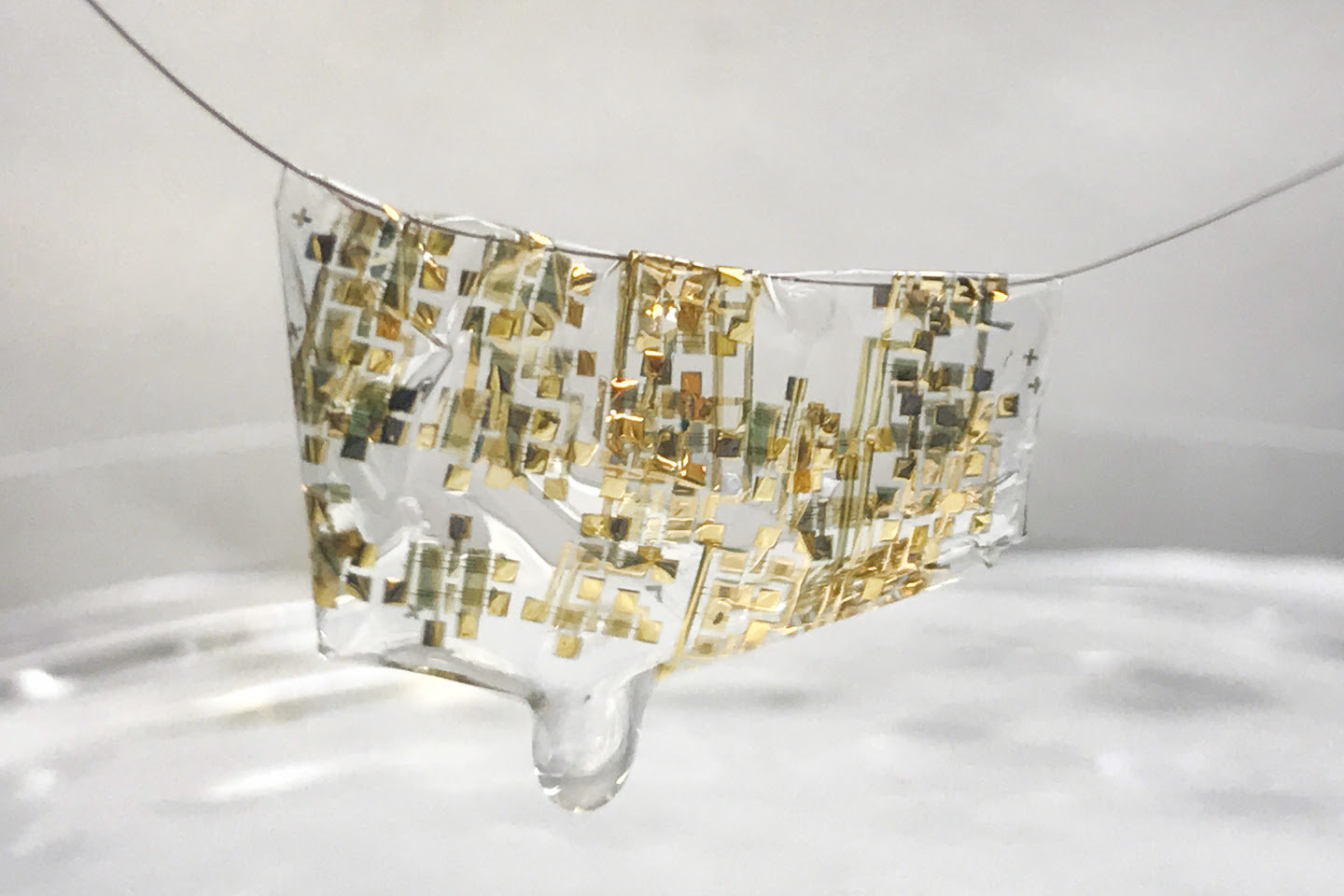Biodegradable Circuitry Could Shrink the World's Growing Piles of E-Waste

The computer revolution has put the world's knowledge at your fingertips — and a growing pile of long-lived, hazardous electronic junk in your local landfill.
A team of scientists in California say they may be able to change that by producing lightweight, flexible circuitry that's also biodegradable. The researchers report they have produced a semiconductor built on a base of cellulose, the main ingredient in plant fibers. The rest of the device is made of carbon-based compounds, with ordinary iron providing the electrodes.
And when it's time to get rid of it, just add a dash of vinegar — a weak acid with a pH comparable to that kitchen staple will start dissolving the device.
"Using an ultrathin biodegradable substrate, we successfully fabricated polymer transistors and logic circuits that show high performance and are ultralightweight, but they can be fully disintegrable," the scientists wrote this week in the journal Proceedings of the National Academy of Sciences.
The team included chemists, engineers, and materials experts from Stanford University, the University of California at Santa Barbara, and the computer manufacturer Hewlett-Packard.
RELATED: Electronic Junk Is Piling Up in Asia at an Alarming Rate
The semiconductor could be produced more cheaply than conventional circuitry, but it's not as capable. It will take three to five years to improve its performance enough for it to be commercially useful in the kind of internet-enabled devices that are becoming increasingly popular, said Ting Lei, a chemical engineer at Stanford and the study's lead author.
Get the world’s most fascinating discoveries delivered straight to your inbox.
"These devices don’t require high performance," Lei said. "They require low cost and large-scale production. Our material can satisfy these applications."
Electronic waste is a fast-growing environmental problem in both the developed world and in developing countries, where much of it gets dumped. Tens of millions of tons of old devices end up in the trash every year, the United Nations estimates. They're loaded with plastics and heavy metals like mercury and cadmium, and efforts to reclaim and resell those materials can yield toxic byproducts as well.
The goal of the research was to find a way to reduce that waste stream, Lei said — but the semiconductors also could have medical uses as implantable sensors, helping doctors track body functions or chemistry without the need for additional surgery to remove them. They might have security applications, allowing electronics to be dissolved after use, "rendering them untraceable," the paper notes.
Lei said biodegradable semiconductors might have applications in environmental monitoring as well, allowing scientists to install them and receive data without having to return to collect them.
Originally published on Seeker.
